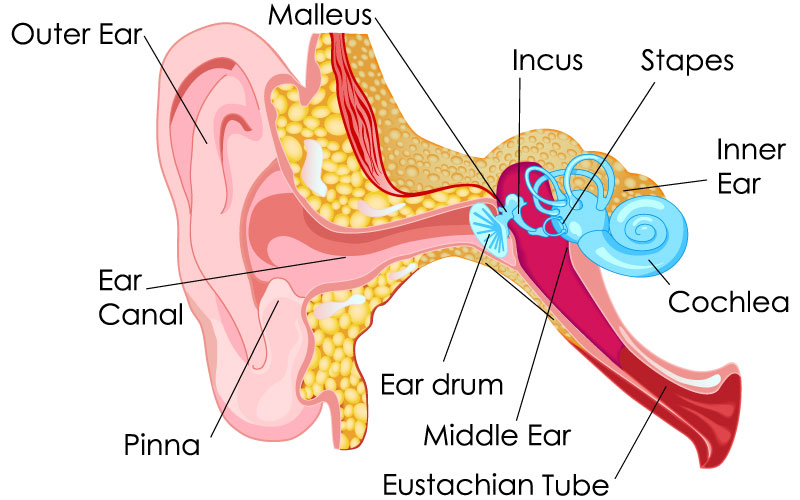Coming out of Kansas

At Colorful Hearing, we don’t believe that hearing loss should define your identity. Our goal is to equip you to get beyond the gray-scale soundscape of untreated hearing loss to make life easier and more enjoyable. Below are different types of hearing impairment from which you can find relief. Come link arms with us on the yellow brick road of life. We have the brains, heart and courage to help you find your heart’s desire.
Below are some of the types of hearing impairment for which our audiologist can provide relief.
Conductive Hearing Loss
Have you ever tried to play the game Marco–Polo in the pool? Hearing under water sounds very muffled because sound waves meet resistance as they attempt to travel from the air into water. Inside the ear, sound must make the transition from traveling through the air into a fluid filled chamber in the inner ear. The human ear is intelligently designed to transfer sound efficiently from the outer ear, through the eardrum into the middle ear space. In the middle ear, the tiniest bones in the body (ossicles) transfer the sound from the eardrum into the inner ear. The energy transfer in the middle ear system is highly efficient, when it is working properly.
Conductive hearing loss means that something has interrupted the efficient transfer of sound waves. The middle ear problem may involve fluid in the middle ear space, stiffening of the ossicles, abnormal growths, or discontinuity. The interruption of sound energy transfer causes up to a 60 dB HL hearing loss, even if the inner ear is working properly. Conductive hearing loss is medically treatable.

Sensorineural Hearing Impairment
The cochlea is the organ of hearing, about the size of a pea, which is well protected in the temporal bone of the sku
ll. The sound energy delivered from the middle ear causes tiny hair cells to bend inside the fluid-filled cochlea. As these precisely organized hair cells move, neural signals are sent to the brain encoded with auditory information.
When inner ear hair cells break or malfunction, sensorineural hearing loss results. This type of hearing impairment is permanent. Damage to the cochlea can be congenital, genetic, or occur with lack of blood flow to the hearing mechanism, prolonged noise exposure, ototoxic drugs, or trauma to the head. Sensorineural hearing loss is usually treated with hearing aids.
Mixed Hearing Impairment
Mixed hearing impairment involves hearing loss that originates from the middle ear and the inner ear. Different tests in the audiological evaluation indicate where the hearing mechanism is having difficulty processing sound. When mixed hearing impairment is diagnosed, you will be referred to your physician to resolve the conductive component. Once hearing improves with medical treatment, the permanent part of the hearing loss is treated with hearing aids by your audiologist.
Central Auditory Processing Disorder
The neural pathways that carry sound information to the brain sometimes break down. Central hearing impairment makes it difficult for the brain to interpret the meaning of auditory information. In some cases, peripheral hearing is found to be normal, even though the person cannot understand speech information. Central auditory processing disorder is diagnosed with a special battery of tests. Treatment may involve therapy and hearing aids.
Outer Ear Hearing Impairment
Conditions of the outer ear usually involve something that physically blocks the ear canal. An otoscopic examination of your ear is a standard part of your hearing test. An ear that is blocked with impacted wax, or objects will experience hearing loss; and in some cases, tinnitus. Once the obstruction is removed, the good news is that hearing returns.
Life is waiting for you to reengage. We have your answers. Call us at (940) 387-3330 or contact us here to learn more about how Colorful Hearing can help you overcome hearing impairment.





